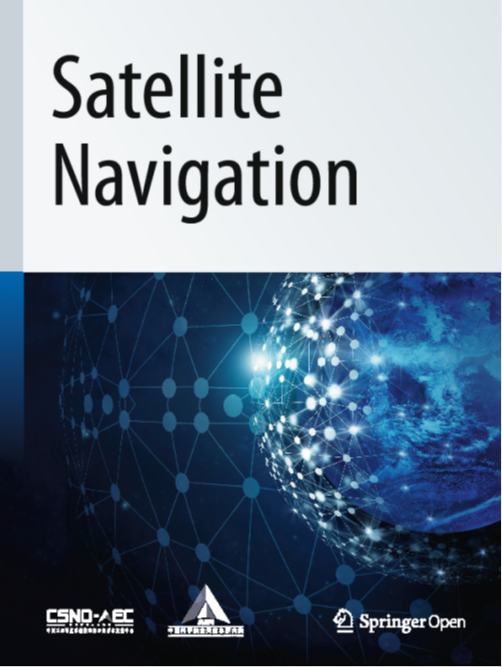多频智能手机定位性能评估:对 A-GNSS PPP-B2b 服务及其他服务的启示
IF 10.1
1区 地球科学
Q1 ENGINEERING, AEROSPACE
引用次数: 0
摘要
2023 年 8 月,小米发布了红米 K60 Ultra,这是首款集成北斗三号卫星导航系统精确点定位(PPP-B2b)服务并采用 PPP 技术作为主要定位方法的多频智能手机。定位增强服务由中国信息通信研究院开发的辅助全球导航卫星系统(A-GNSS)定位平台提供。服务器与用户之间的信令交互严格遵守《第三代移动通信技术合作伙伴项目长期演进定位协议》和《开放移动联盟安全用户平面定位框架》。为了全面评估红米 K60 Ultra 的性能,本研究设计了六个不同的实验场景,并对多频和多 GNSS 观测噪声、首次定位时间(TTFF)以及基于 GNSS 和基于网络的定位性能进行了全面研究。实验结果表明,红米 K60 Ultra 内的 GNSS 芯片组在支持的卫星星座、频率和观测精度方面在消费类市场处于领先地位,可与一些低成本 GNSS 接收器媲美。A-GNSS 定位可将 TTFF 从 30 秒缩短到 5 秒以内,与独立的 GNSS 模式相比,冷启动速度提高了 85% 以上。定位结果表明,A-GNSS PPP-B2b 服务可在开阔天空、现实和具有挑战性的城市环境中实现均方根误差小于 1.5 米、2.5 米和 4 米的定位性能。与基于全球导航卫星系统的定位相比,基于蜂窝网络的观测到达时间差(OTDOA)定位在各种实验场景中实现了从几十米到几百米不等的精度,目前主要用作粗略的位置确定。此外,本研究还探讨了三维映射辅助(3DMA)GNSS 算法在检测非视距信号和提高定位性能方面的潜力。结果表明,与传统的 PPP 相比,3DMA PPP 能显著加快 PPP 的收敛速度,并将定位精度提高 30% 以上。因此,三维城市模型可作为未来 A-GNSS 定位平台的辅助数据。本文章由计算机程序翻译,如有差异,请以英文原文为准。
Multi-frequency smartphone positioning performance evaluation: insights into A-GNSS PPP-B2b services and beyond
In August 2023, Xiaomi unveiled the Redmi K60 Ultra, the first multi-frequency smartphone integrated with BeiDou-3 Navigation Satellite System Precise Point Positioning (PPP-B2b) services and employing PPP technology as the primary positioning method. The positioning enhancement service is provided by the Assisted Global Navigation Satellite System (A-GNSS) location platform developed by the China Academy of Information and Communications Technology. The signaling interaction between the server and the users strictly adheres to the Third Generation of Mobile Communications Technology Partnership Project Long-Term Evolution Positioning Protocol and the Open Mobile Alliance Secure User Plane Location framework. To comprehensively evaluate the Redmi K60 Ultra’s capabilities, this study designed six distinct experimental scenarios and conducted comprehensive research on multi-frequency and multi-GNSS observation noise, Time to First Fix (TTFF), as well as the performance of both GNSS-based and network-based positioning. Experimental results indicate that the GNSS chipset within the Redmi K60 Ultra has achieved a leading position in the consumer market concerning supported satellite constellations, frequencies, and observation accuracy, and is comparable to some low-cost GNSS receivers. A-GNSS positioning can reduce the TTFF from 30 to under 5 s, representing an improvement of over 85% in the cold start speed compared to a standalone GNSS mode. The positioning results show that the A-GNSS PPP-B2b service can achieve positioning performance with RMS errors of less than 1.5 m, 2.5 m, and 4 m in open-sky, realistic, and challenging urban environments. Compared to GNSS-based positioning, cellular network-based Observed Time Difference of Arrival (OTDOA) positioning achieves an accuracy ranging from tens to hundreds of meters in various experimental scenarios and currently functions primarily as coarse location determination. Additionally, this study explores the potential of the Three-Dimensional Mapping-Aided (3DMA) GNSS algorithm in detecting Non-Line-of-Sight signals and enhancing positioning performance. The results indicate that 3DMA PPP, as compared to conventional PPP, can significantly accelerate PPP convergence and improve positioning accuracy by over 30%. Consequently, 3D city models can be utilized as future assistance data for the A-GNSS location platform.
求助全文
通过发布文献求助,成功后即可免费获取论文全文。
去求助
来源期刊

Satellite Navigation
Multiple-
CiteScore
19.40
自引率
6.20%
发文量
25
审稿时长
12 weeks
期刊介绍:
Satellite Navigation is dedicated to presenting innovative ideas, new findings, and advancements in the theoretical techniques and applications of satellite navigation. The journal actively invites original articles, reviews, and commentaries to contribute to the exploration and dissemination of knowledge in this field.
 求助内容:
求助内容: 应助结果提醒方式:
应助结果提醒方式:


